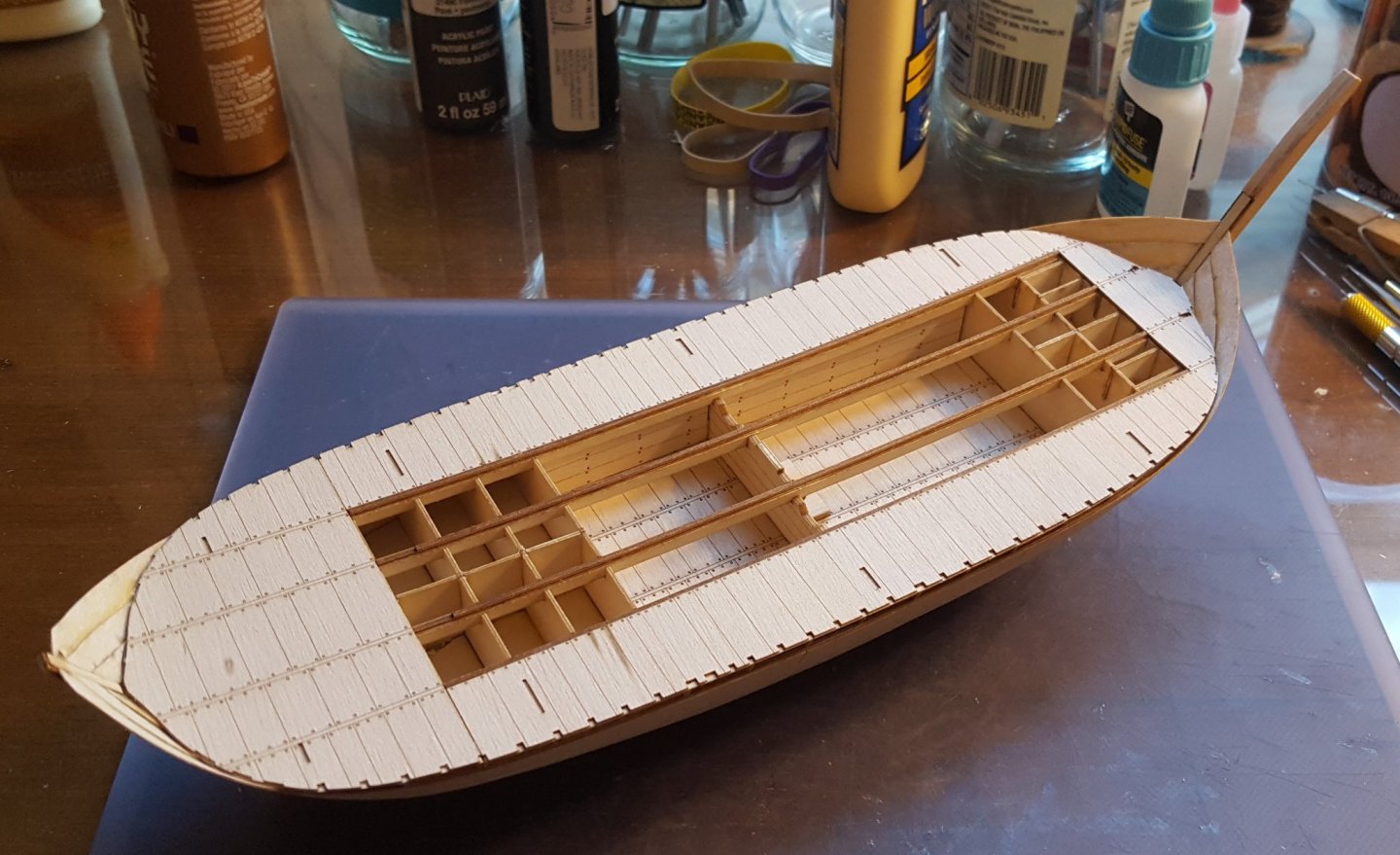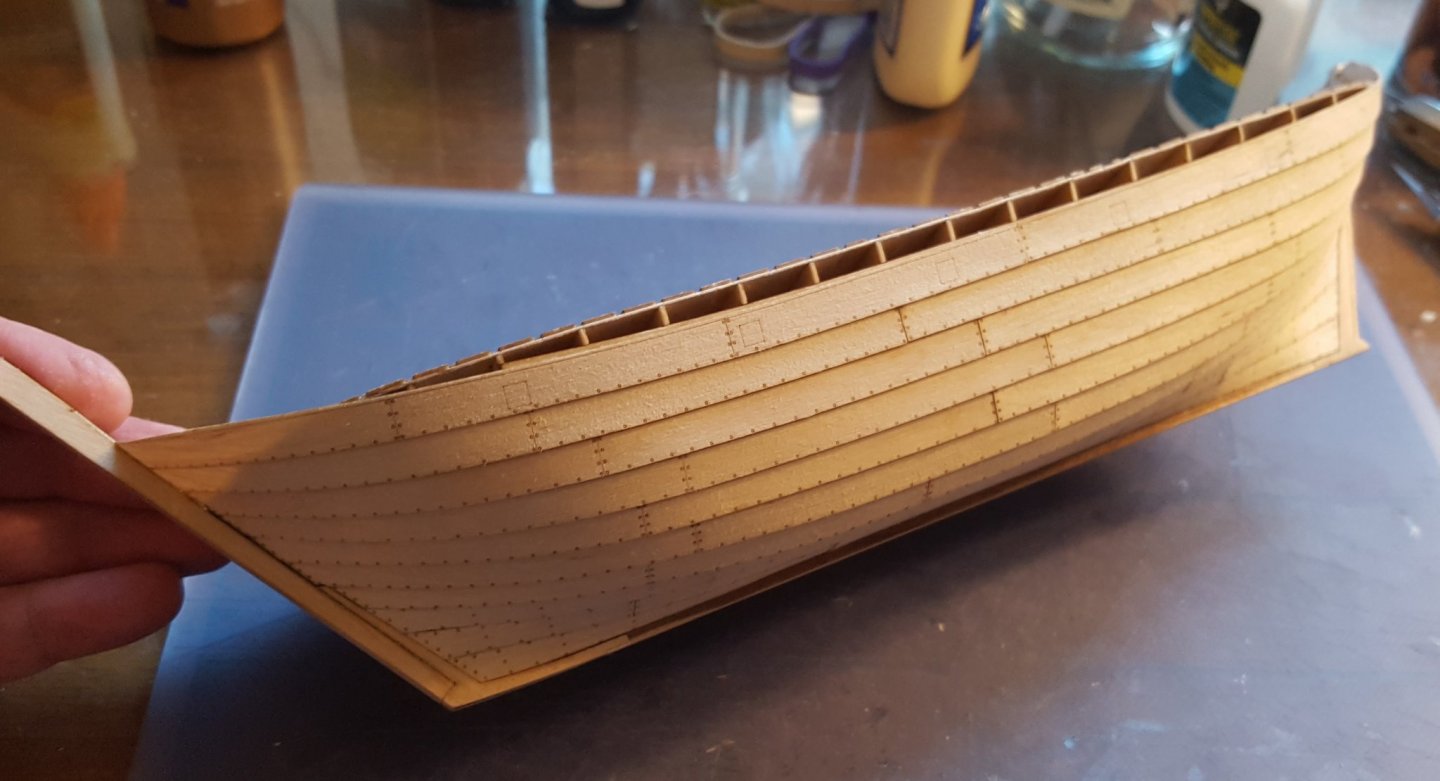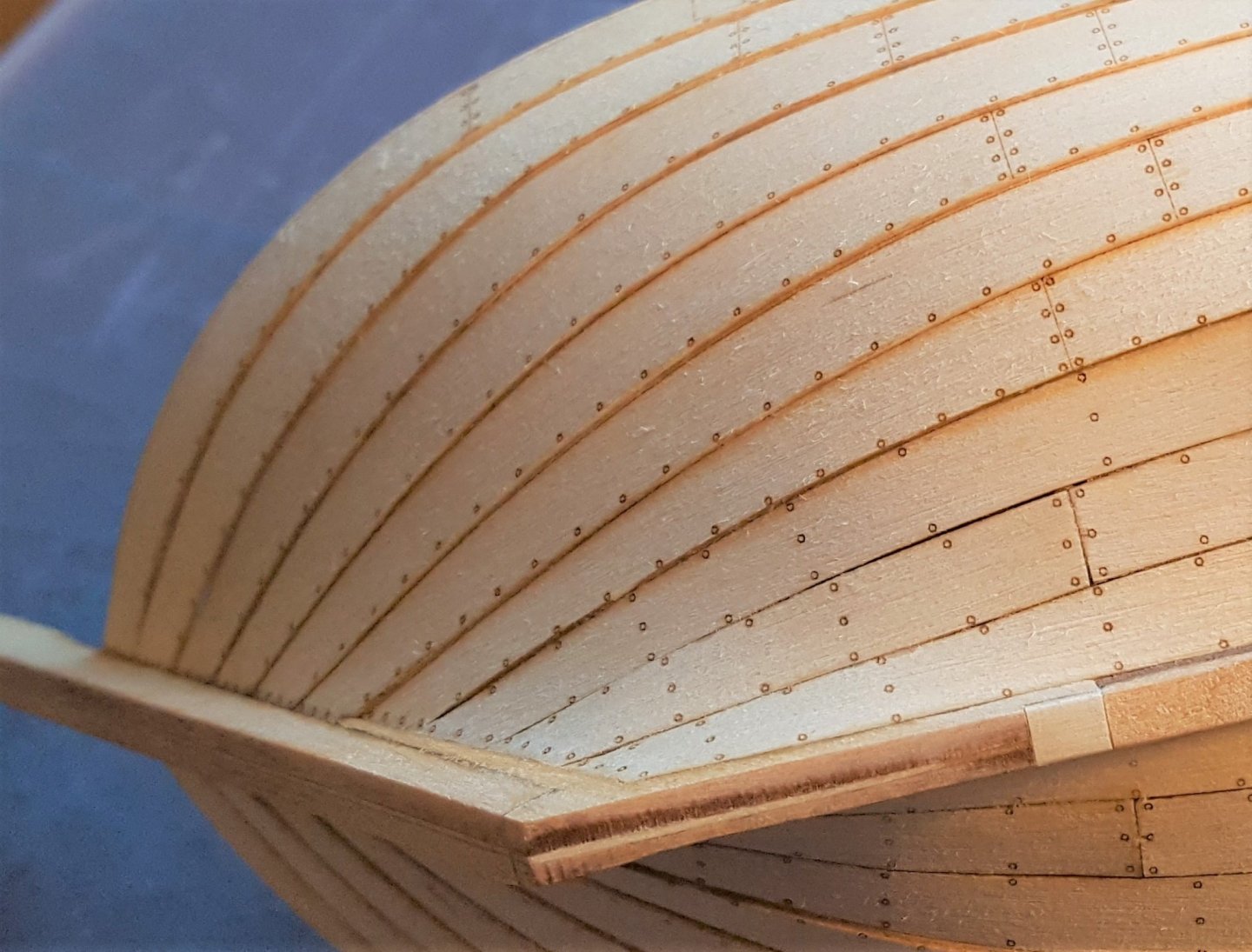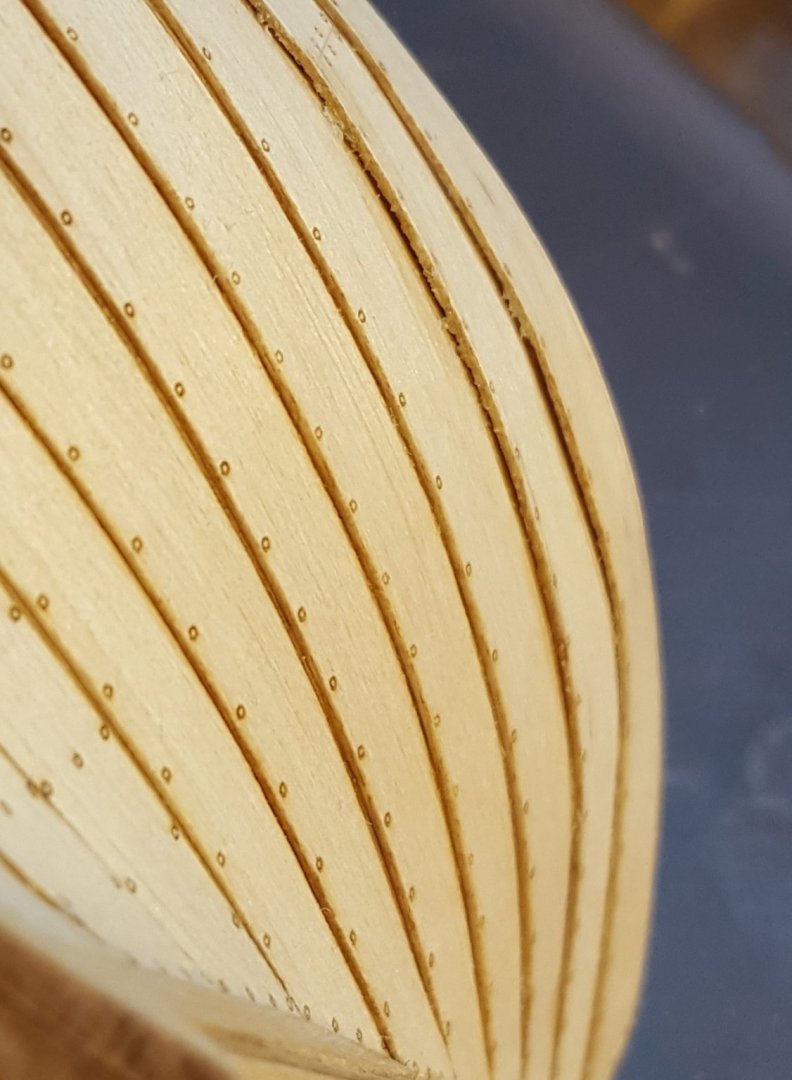-
Posts
10,520 -
Joined
-
Last visited
Content Type
Profiles
Forums
Gallery
Events
Everything posted by ccoyle
-
Welcome aboard! Fascinating picture, too.
-
Hadn't thought about it. It would be a lot of work, and I subscribe to the "less is more" school of thought on treenailing.
- 179 replies
-
- shipyard
- wütender hund
-
(and 1 more)
Tagged with:
-
Well, a plank here, a plank there -- slowly the work is progressing. Here is the progress to date: Mostly I'm making this post to document for other builders a problem that I have been having with the planking at the stern. I've been running into a lot of trouble with closing the seams where planks overlap -- but only at the stern. Hmm. Here's a shot of the bow: As you can see, everything looks nice and tidy. But now, here's the stern: You can see that there's stubborn gaps forming as a result of needing to bend the planks a certain amount in order to make them align properly. Of course, the close-up photo makes the problem look much worse than it actually is, and a person would have to view the finished model from a very awkward angle to see the open seams, but still I'm finding it rather annoying to try and correct. Two more strakes, then it will be time for the first application of stain.
- 179 replies
-
- shipyard
- wütender hund
-
(and 1 more)
Tagged with:
-

Which Glue
ccoyle replied to Old Fart's topic in Building, Framing, Planking and plating a ships hull and deck
Carpenter's glue, medium CA ("super glue"), no contact cement. The first will get you through most of the hull construction. -

F-5F by ErnieL - Kitty Hawk Models - 1/32 - PLASTIC
ccoyle replied to ErnieL's topic in Completed non-ship models
Ernie, Every time I see your avatar I think of this statue in Eureka, California, near my hometown. It commemorates all the fishermen lost at sea. -
I've had my Sassafras 12 kit in the garage for a few months now. I'm actually a little intimidated by it -- since it's full-sized, I can't simply order another kit if I booger this one.
- 39 replies
-
- northeaster dory
- chesapeake light craft
-
(and 1 more)
Tagged with:
-
Hello, OF. A good way to get a feel for good beginner models is to look at what other beginners have completed as their first projects. You can click here to see a list of such projects. Take note of what the finished build logs have in common: most are smallcraft with simple rigs, and three-masted, full-rigged ships are the exception rather than the norm. Also, read our Cautionary Tale post, if you haven't already. Cheers!
-

new modeler from Barcelona and some Albatros photos
ccoyle replied to Geowolf's topic in New member Introductions
Welcome! You finished your first model, and that is the most important thing. And besides, it looks good, too! Cheers! -
That sums up my knowledge of them as well.
-
I appreciate the little things in the design, like having the tick marks at the stem and stern to guide affixing the planks. But the system isn't 100% foolproof -- there's a little bit of wiggle room in where to glue the false stem and stern posts, and that can effect how the planks are laid. I'm just hoping that in my WH build that I've got everything close enough, and that error creep won't become a major factor. It's a good thing that this isn't a Halinski kit -- with Halinski, the design tolerances are so tight that if you get off by even a fraction of a millimeter, you're in deep, deep doo-doo.
- 130 replies
-
- wütender hund
- hanseatic
-
(and 2 more)
Tagged with:
-
Your patience appears to be paying off, as so far it looks good!
- 16 replies
-
- constitution
- BlueJacket Shipcrafters
-
(and 1 more)
Tagged with:
-

M-50 Israeli Sherman - FINISHED - MP Models - 1:35 Scale
ccoyle replied to CDW's topic in Non-ship/categorised builds
In Mariposa County, California, where I used to live, the winding Highway 49 North traversed the very deep Merced River gorge, with no guard rails. I once asked a friend of mine in the sheriff's office how many vehicles were somewhere down in the canyon out of sight from the road and beyond the reach of tow cables; his answer was something along the lines of "more than people realize." -
I'm going to agree with Jonny, who has rightly observed that the Bounty is not an ideal kit for a beginner. A larger problem as I see it is the "month or two" time frame that you mentioned. Some of our members who are retired and also seasoned model makers can pull off something like that in a month or two, but you are looking at a project that will take you a minimum of several hundred hours to complete, even you knew what you were doing. As a beginner, it will likely take much longer. Jonny's suggestion about the longboat is a good one. It's been a popular beginner's kit around here. Cheers!
- 14 replies
-
- hours
- build time
- (and 4 more)
-
Welcome!
About us
Modelshipworld - Advancing Ship Modeling through Research
SSL Secured
Your security is important for us so this Website is SSL-Secured
NRG Mailing Address
Nautical Research Guild
237 South Lincoln Street
Westmont IL, 60559-1917
Model Ship World ® and the MSW logo are Registered Trademarks, and belong to the Nautical Research Guild (United States Patent and Trademark Office: No. 6,929,264 & No. 6,929,274, registered Dec. 20, 2022)
Helpful Links
About the NRG
If you enjoy building ship models that are historically accurate as well as beautiful, then The Nautical Research Guild (NRG) is just right for you.
The Guild is a non-profit educational organization whose mission is to “Advance Ship Modeling Through Research”. We provide support to our members in their efforts to raise the quality of their model ships.
The Nautical Research Guild has published our world-renowned quarterly magazine, The Nautical Research Journal, since 1955. The pages of the Journal are full of articles by accomplished ship modelers who show you how they create those exquisite details on their models, and by maritime historians who show you the correct details to build. The Journal is available in both print and digital editions. Go to the NRG web site (www.thenrg.org) to download a complimentary digital copy of the Journal. The NRG also publishes plan sets, books and compilations of back issues of the Journal and the former Ships in Scale and Model Ship Builder magazines.







